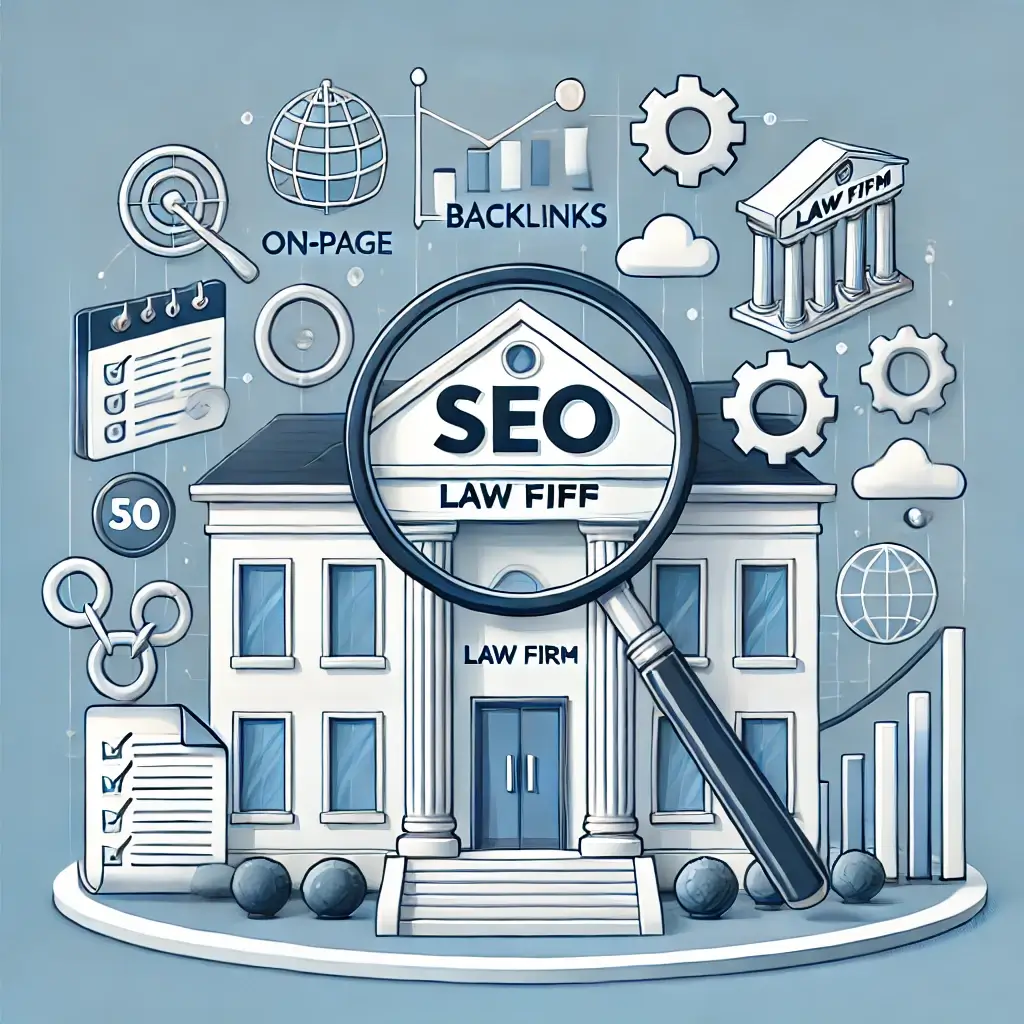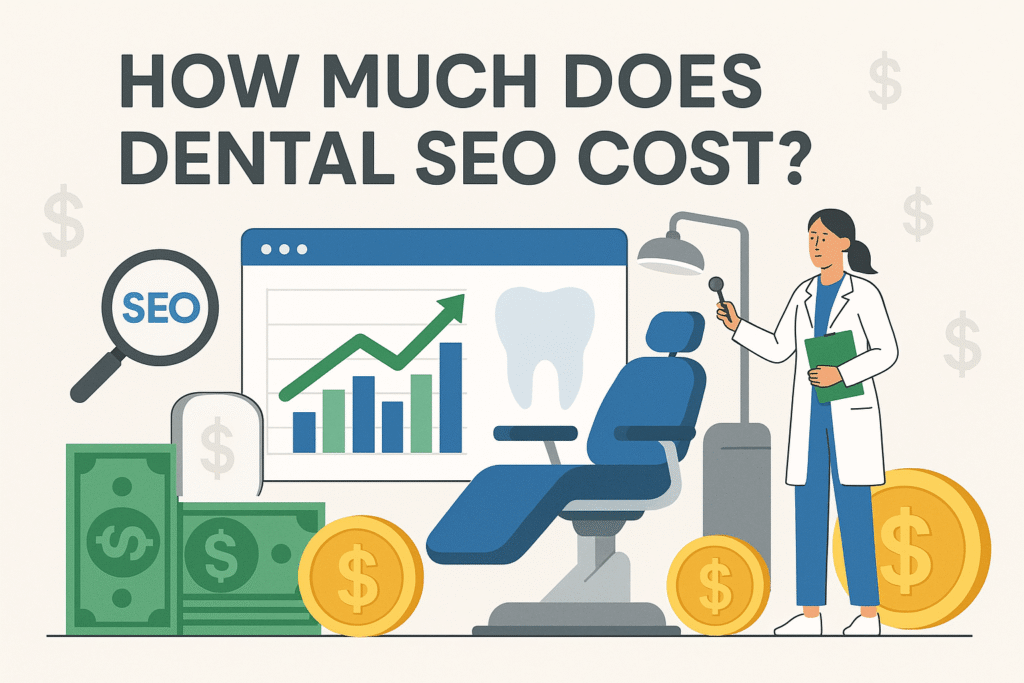Why Law Firm SEO Has Become Non-Negotiable?
In 2025, over 78% of legal clients begin their search for solicitors online before ever speaking to a representative. Even more tellingly, according to BrightLocal, 46% of all Google searches have local intent, meaning potential clients are actively searching for legal services in their area — not just information.
For law firms, this data points to a simple truth: SEO is no longer an option, but an operational necessity. The firms that dominate Google’s top results are not just optimising keywords; they are building semantic topical authority — systematically connecting every page, service, and article in a way that search engines can interpret as expert, trustworthy, and contextually relevant.
This guide dives deep into the most effective law firm SEO strategies, using a semantic SEO framework inspired by Koray Tuğberk Gübür’s concepts of Topical Maps, Contextual Flow, and Source Context.
1. Understanding the Core of Law Firm SEO
From Keywords to Context: The Evolution of Legal Search Optimisation
Traditional SEO revolved around ranking for keywords such as “divorce lawyer Manchester” or “personal injury solicitor near me.” But Google’s algorithms have evolved to interpret entities, relationships, and intent, not just words.
Today’s SEO for law firms requires:
- Entity-oriented optimisation: Connecting your firm’s name, services, and expertise to recognised entities (e.g. “family law,” “employment disputes”).
- Topical authority: Covering every sub-topic under your core legal service areas to signal depth and completeness.
- Semantic connections: Linking related concepts such as “court representation,” “legal consultation,” and “client confidentiality” across your content.
For a structured foundation, you can explore our guide on The Complete SEO Guide for Solicitors, which breaks down every stage of SEO from technical setup to content hierarchy.
2. Defining Your Source Context and Central Entity
Source Context: What Does Your Law Firm Represent?
In semantic SEO, the Source Context represents the purpose and identity of your website. For law firms, this is the union between your practice areas and geographical presence.
If you’re a Manchester-based solicitor, your source context might be defined as:
“Providing professional legal services to individuals and businesses across Greater Manchester in areas including family law, conveyancing, and employment law.”
This statement anchors your entire topical map, allowing every subsequent article, page, and link to strengthen your core context.
Central Entity: The Law Firm
Every law firm’s website revolves around one Central Entity — the firm itself. Google must be able to recognise this entity as:
- A provider of legal services (linked to schema, Google Business Profile, reviews)
- An authority in its knowledge domain (linked to content and citations)
- A trusted source (linked to E-E-A-T signals such as author bios, case studies, and transparency pages)
If your firm operates locally, optimise your central entity further by reading Law Firm SEO Manchester.
3. Building a Topical Map for Legal SEO
A Topical Map is the heart of semantic SEO. It defines how your website’s pages interconnect to reflect your authority across every relevant aspect of your legal expertise.
Core vs Outer Sections
Following Koray’s framework:
- Core Section: Main attributes of your service (e.g. “divorce process,” “child custody law,” “settlement agreements”)
- Outer Section: Related topics that support your expertise (e.g. “marriage counselling,” “financial planning after divorce,” “co-parenting advice”)
By interlinking both sections, you show Google not only that you understand the law, but also the context surrounding it — increasing both relevance and responsiveness.
Learn how to design this framework step by step in our Content Strategy for Law Firms guide.
4. Local SEO: The Foundation of Visibility for Solicitors
Why Local SEO Matters
For law firms, local search optimisation is the difference between appearing in Google Maps results or being buried beneath national firms. Over 60% of legal service searches include terms like “near me” or a city name.
To dominate local results:
- Create and optimise your Google Business Profile with practice areas, location, hours, and client reviews.
- Use consistent NAP (Name, Address, Phone) data across all listings.
- Embed Google Maps and relevant schema on your location pages.
- Acquire local backlinks from chambers, directories, and Manchester legal associations.
For practical steps, explore our comprehensive blueprint: Local SEO for Solicitors: Rank in Maps & Location Searches.
5. On-Page SEO: Structuring Legal Content Semantically
Macro and Micro Semantics in Practice
Koray defines macro semantics as the overarching context of your page (e.g. “family law advice for Manchester clients”), while micro semantics are the granular elements that refine meaning — headings, predicates, and entity connections.
When optimising law firm pages:
- Use clear H1 and H2 structures that reflect both macro and micro intent.
- Include legal entities like “solicitor,” “barrister,” “court,” and “contract” naturally within content.
- Apply schema markup for services, reviews, and FAQs.
- Optimise your predicate terms (e.g. “advise,” “represent,” “assist”) to show action and authority.
For technical guidance, read our Ultimate Guide to Technical SEO for Solicitors.
6. Technical SEO for Law Firms: Trust, Speed, and Accessibility
Search engines evaluate law firm websites as YMYL (Your Money, Your Life) pages, meaning they require a higher level of accuracy and trustworthiness.
Focus on:
- HTTPS encryption and secure forms.
- Core Web Vitals optimisation (LCP, FID, CLS).
- Mobile responsiveness and accessibility compliance.
- Structured site architecture to support topical flow.
- Schema hierarchy connecting entities (organisation → service → author).
To ensure your site meets modern standards, start with How to Audit a Law Firm Website for SEO.
7. Content Strategy: Creating Authority Through Context
Moving Beyond “Blog Posts”
Law firms often produce generic blog posts that lack semantic depth. To rank effectively, your content briefs must follow contextual hierarchy:
- H1: Central topic (macro context)
- H2s/H3s: Supporting subtopics (micro contexts)
- Contextual bridges: Internal links connecting to other legal areas (e.g. linking “child custody” to “divorce settlements”)
This structure creates a semantic content network, allowing Google to understand your expertise at both document and domain level.
You can learn how to design this architecture in How to Create an SEO Blogging Strategy for Law Firms.
8. Link Building and Digital Authority for Solicitors
Quality over Quantity
Legal SEO link-building isn’t about volume — it’s about relevance and semantic closeness. Each backlink should strengthen your source context.
Effective link types include:
- Legal directories (The Law Society, Find a Solicitor)
- Manchester legal associations and chambers
- Guest posts on reputable legal publications
- Media citations from legal news outlets
Remember, irrelevant links dilute your topical authority — a concept Koray refers to as contextual dilution. Links must align with your topical map and support your core entity.
9. Conversion Optimisation: Why Many Law Firm Homepages Fail
Ranking well means little if your homepage fails to convert. Many law firm websites suffer from semantic disconnection between their content and conversion intent.
Your homepage should:
- Feature clear value propositions (e.g. “Over 20 years helping Manchester families”)
- Include trust signals — accreditations, testimonials, and case studies
- Present conversion pathways aligned with intent (e.g. “Book a free consultation” CTA)
- Use semantic visuals (images that reinforce your legal focus, not stock photos)
To see common pitfalls and fixes, visit Why Most Law Firm Homepages Fail to Convert.
10. Tracking, Analytics, and Continuous Configuration
SEO doesn’t end after implementation. Google’s semantic distances and SERP characteristics change constantly, requiring content configuration — ongoing updates to maintain relevance and responsiveness.
Use:
- Google Search Console and Analytics 4 for query analysis
- Rank tracking tools segmented by local intent
- Session data to identify declining engagement or clickless impressions
Learn how to set up complete tracking frameworks in How Can I Track SEO Results for Law Firms?.
11. Common Reasons Law Firm Rankings Drop
Even established law firms can experience ranking declines due to:
- Weak topical coverage
- Outdated schema or site speed
- Duplicate or cannibalised content
- Negative historical data (poor engagement metrics)
Discover root causes and recovery strategies in Why Your Manchester Business Dropped in Google Rankings: Causes and Fixes.
12. Measuring ROI: Can SEO Really Generate Leads for Law Firms?
Absolutely. Law firms that invest in structured, semantically connected SEO campaigns see measurable results:
- Increased organic lead volume
- Reduced dependence on paid ads
- Higher trust and brand recall
- Stronger long-term visibility
Explore practical ROI analysis in Can SEO Help Law Firms Generate More Leads?.
13. The Cost of SEO for Law Firms in 2025
SEO is an investment, not an expense. The cost varies based on:
- Scope of services (national vs. local)
- Technical foundation (site rebuilds, schema setup)
- Content volume and topical map size
To estimate realistic pricing and ROI for your area, read SEO Costs in Manchester 2025.
14. Putting It All Together: The Semantic SEO Blueprint for Law Firms
Effective law firm SEO combines:
- Source Context Alignment — ensuring every page supports your firm’s identity.
- Topical Map Expansion — building coverage from core legal topics to related contextual areas.
- Semantic Optimisation — refining headings, predicates, and internal linking to improve contextual relevance.
- Technical Excellence — maintaining site speed, schema integrity, and trust factors.
- Conversion-Driven Design — ensuring every visit leads closer to consultation or inquiry.
With these elements, your law firm website becomes a semantic network — one where Google sees not just content, but structured legal expertise designed for users.
Conclusion: From Ranking to Authority
SEO for law firms isn’t about chasing keywords — it’s about owning a legal topic in Google’s eyes. By combining topical maps, semantic structuring, and historical data quality, your firm can achieve sustainable, long-term authority.
When every article, service page, and local listing forms part of a unified context, your website transitions from a group of pages to a recognised entity of trust.
If you’re ready to build that authority, explore more in:





